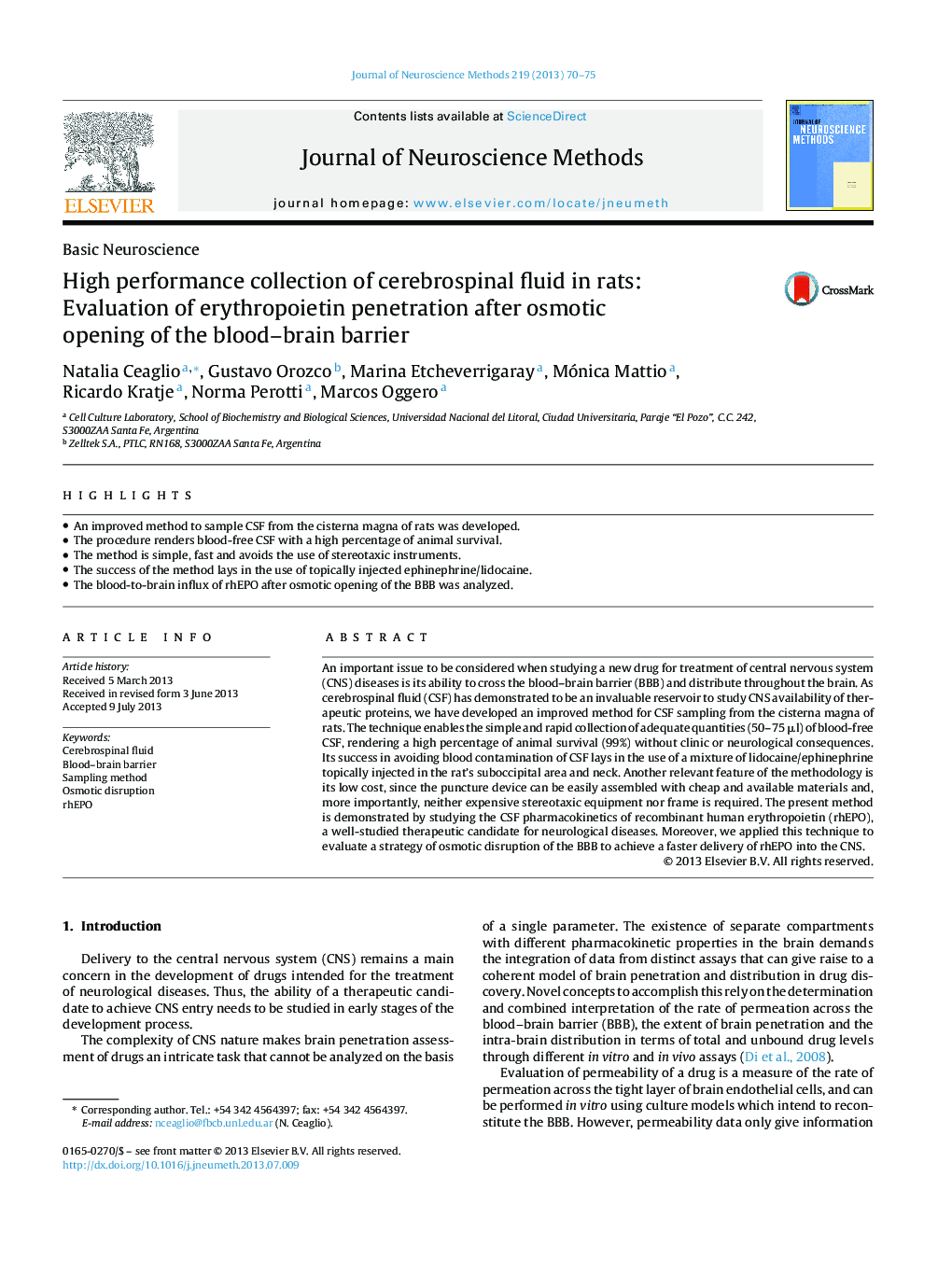| Article ID | Journal | Published Year | Pages | File Type |
|---|---|---|---|---|
| 4335048 | Journal of Neuroscience Methods | 2013 | 6 Pages |
•An improved method to sample CSF from the cisterna magna of rats was developed.•The procedure renders blood-free CSF with a high percentage of animal survival.•The method is simple, fast and avoids the use of stereotaxic instruments.•The success of the method lays in the use of topically injected ephinephrine/lidocaine.•The blood-to-brain influx of rhEPO after osmotic opening of the BBB was analyzed.
An important issue to be considered when studying a new drug for treatment of central nervous system (CNS) diseases is its ability to cross the blood–brain barrier (BBB) and distribute throughout the brain. As cerebrospinal fluid (CSF) has demonstrated to be an invaluable reservoir to study CNS availability of therapeutic proteins, we have developed an improved method for CSF sampling from the cisterna magna of rats. The technique enables the simple and rapid collection of adequate quantities (50–75 μl) of blood-free CSF, rendering a high percentage of animal survival (99%) without clinic or neurological consequences. Its success in avoiding blood contamination of CSF lays in the use of a mixture of lidocaine/ephinephrine topically injected in the rat's suboccipital area and neck. Another relevant feature of the methodology is its low cost, since the puncture device can be easily assembled with cheap and available materials and, more importantly, neither expensive stereotaxic equipment nor frame is required. The present method is demonstrated by studying the CSF pharmacokinetics of recombinant human erythropoietin (rhEPO), a well-studied therapeutic candidate for neurological diseases. Moreover, we applied this technique to evaluate a strategy of osmotic disruption of the BBB to achieve a faster delivery of rhEPO into the CNS.
